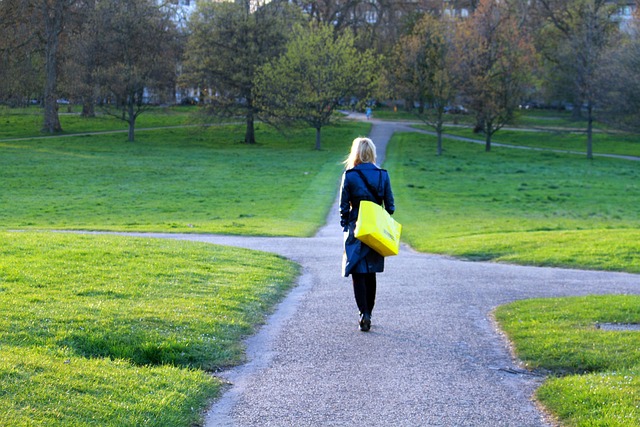Previously, I discussed the pervasive impact of negative beliefs about aging and the life-enhancing benefits of positive age beliefs. In those posts, I drew on the mind-opening research of Professor Becca Levy, author of Breaking the Age Code: How Your Beliefs About Aging Will determine How Long and How Well You Live. In her book, Becca not only explores the potential negative or positive impacts of our beliefs about aging, she also offers multiple ways to develop a positive mindset that will enable us to live longer and with a better quality of life. She provides numerous examples of people in different fields who have achieved incredible things in their old age. Becca stresses the need for each of us to be proactive in building positive beliefs about aging to counteract the influence of ageism which is with us from the time we hear our earliest fairy tales until we experience palliative care.
The ABC approach to developing positive beliefs about aging
In her book, Becca introduces the ABC Method to liberate us from the socially-derived negative beliefs about aging and free our minds to realise the potential inherent in aging. Her ABC method incorporates three core elements – awareness, blame and challenge:
A – Awareness
Becca suggests that developing positive age beliefs begins with ourselves, increasing our awareness of our own thoughts and the way this impacts our words and actions. We can increasingly become conscious of how we speak to people in different age groups – how we positively recognise “age diversity” (rather than perpetuating “age blindness”). She recalls that on one occasion, she found herself talking in a childlike manner to older people (“elderspeak”) and immediately pulled herself up and changed the way she spoke to these people. Her newly adopted adult-to-adult communication was respectful of the wisdom and experience of the people she was addressing. This is an example of reflection-in-action, a skill we can develop by practising reflection on our actions as a habitual approach.
Our awareness can develop by building a “portfolio of positive images of aging”. We can do this by reading newspaper reports and articles about people who have excelled in various fields of endeavour. Another rich source of positive age images is memoirs written by people who describe their accomplishments in old age despite early childhood setbacks, including traumatic experiences. An incredible exemplar of this approach to developing positive beliefs is Maya Angelou. She not only broke new ground in writing memoirs but wrote her seventh memoir, Mom and Me and Mom, in her eighties. Her accomplishments in many fields such as poetry, writing, acting, film, singing and activism are memorialised in a website in her name. Becca cautions us, though, to avoid trying to model ourselves on a single, exceptional older person – she argues that a more attainable goal is to strengthen qualities in ourselves that “older role models” exhibit (such as Maya’s work ethic).
We only have to look around us for positive models of aging amongst our friends, relatives, colleagues, our medical carers and other professionals. This involves developing relationships with, and paying attention to, people who have aged and yet who continue to contribute positively to their career arena, the local community or society generally. We can also seek the company of elders. Nadine Cohen, author of the exquisite, debut novel, Everyone and Everything, actively seeks people of her mother’s and grandparents’ age and finds that she is “usually richer emotionally” because of their counsel and wisdom.
B – Blame
Becca argues that we should put the blame where it truly belongs – not our biology but the ageism that surrounds us in every facet of our life. This involves consciously developing awareness of our social environment in our everyday life. It means being able to identify “negative age stereotypes” perpetuated in education, the arts, medical professions, and in daily conversations with friends, colleagues and family members.
As we develop this external awareness, we can begin to identify the “upstream causes” impacting the health and wellness of the aged. Becca maintains that “age beliefs are an upstream predictor of health and well-being”. She contends that if we actively develop positive age beliefs we can change our health habits. This approach is in line with the research that shows that to create new behaviours, we need to challenge the assumptions that underlie old behaviours – it is not enough to practise new behaviours if we want sustainable change.
C- Challenge
Becca recommends challenging ageism in whatever form it takes. She points out the example of antiageism activist, Ashton Applewhite, author of This Chair Rocks: A Manifesto Against Ageism, and the blog Yo, Is This Ageist? Ashton is actively and publicly challenging the hidden negative beliefs as they are reflected in newspaper articles, headlines, advertisements, and elsewhere and educating readers by responding to their questions about ageism. She also has a YouTube channel incorporating her Talk at Google and other presentations addressing ageism. In her Ted Talk, Let’s End Ageism, she points out that ageism is “a prejudice that pits us against our future selves – and each other”.
While people like Ashton and celebrities such as Madonna and Robert De Niro are speaking out publicly against ageism, Becca contends that we can help to overcome ageism in society if we “call it out” when we encounter any form of ageist remark in the relationship circles in which we move, Becca recounts her discussion over coffee with Irene Trenholme who at 99 years of age ran the Secondhand Prose bookstore which donated all it profits to the local St. Johnsbury library. Irene proved to be an exemplar for challenging ageism. Whenever she encountered an ageist remark or action, she would firmly indicate that this was inappropriate, including challenging her doctor who spoke too loudly to her (assuming that, because of her age, she was “hard of hearing”).
Becca challenges many myths that surround aging and encourages us to take up the task of questioning firmly-held beliefs that have no scientific foundation. She provides an Appendix in her book which she describes as “ammunition to debunk negative age stereotypes”. She lists common negative age stereotypes and offers facts (proven by research) that can be used to debunk these stereotypes, including “cognition inevitably declines in old age” and “older persons are technologically challenged”. In relation to the latter myth, Becca points out that Mildred Dresselhaus innovated the field of nanotechnology in her seventies.
Underlying the assumption that older people are technologically challenged is a foundational ageist myth that I call the “blank slate myth”. People often assume that those who are older lack any related knowledge, skill or experience in a particular area, e.g. technology. They forget that the technology they enjoy today was pioneered and developed commercially (long before some were born) by people who are now in their later years. I am now 77 years of age (2024), but I have a long history of involvement in the development and application of technology in education and the workplace in the 1970’s, 1980’s, 1990’s and early 2000’s:
- National Project Team – the design and implementation of the first online, national, accounting and management information system in the Australian Taxation Office (1973 -1977);
- National Project Team – the introduction of word processing and personal computers in the Australian Taxation Office;
- Role of Director, Computer Operations, Australian Taxation Office, Queensland and the Northern Territory;
- Sensitive National projects associated with physical computer security and deterrence and detection of computer fraud;
- Role of National Change Manager for the implementation of online learning and teaching in the Technical and Further Education Institutes across Australia (2000-2004);
- Role of a Leader in Squidoo – a social media platform developed by Seth Godin (2007-2014);
- Creator of a 6-month, online Social Media Marketing Course – 24 weekly PDF’s (2010);
- Creator of e-books on internet marketing, social media marketing and Squidoo marketing strategies (2009-2012);
- Creator of blogs on affiliate marketing (2005-2012) and small business marketing (2011-2012);
- Co-Creator with colleagues in Germany and America of the article-based, social media platform, Wizzley.com (2011);
- Sole author of my current Grow Mindfulness blog (2016 – present; 745 posts).
I spend very little time on social media platforms these days, not because I’m “technologically challenged” but because I have other priorities. My priorities at the moment are to write my mindfulness blog (1,000 word post per week); co-author a book on “managing people”; and write a memoir.
The “blank slate myth” not only applies to technology but also many other areas of endeavour. I found that it applies even in social activities. I still play social tennis in my late seventies and I am often confronted with the manifestation of this myth in our social tennis games. For example, I recently played with a younger partner who shouted out to me not to hit a shot that was clearly going out (by at least 2 metres), assuming that, through lack of experience (or loss of memory/faculties), I had not been able to judge that the ball would be out. Having played more than 10,000 sets of tennis (including competitive tennis at an A-Grade level) over more than 60 years, I have a fairly advanced awareness of what shots are going to go out – it’s embedded in my body memory. I can, for instance, when lobbed by an opposition tennis player, chase down the tennis ball and hit it back over my head and land it in the court (the secret is to face parallel to the back fence of the court so your body knows where it is in relation to the court outline). To me, the “blank slate myth” defies logic and denies the richness of skills, intuition, insight and reflexes developed over many years.
Reflection
In thinking about the impact of negative and positive age beliefs, I became very conscious that, despite social conditioning, what we believe about aging is up to us – and our beliefs determine our actions. I incorporated this reflection in the following poem that I wrote recently;
The Choices You Make About Aging
If you are positive, you open up your potential –
life’s joys and pleasures are yours to gain.
If you look, you will see what is possible –
aging models of achievement are everywhere.
If you challenge the myths, your mind is freed,
you can pursue your goals without constraint.
If you remember what you have achieved
you can draw on your sense of agency.
If you exercise your mind and body
you can restore your acuity and strength.
As you grow in mindfulness
through reading, research and reflection,
you can become more self-aware
and free of stereotypes, assumptions and insipidness.
What you believe about aging
influences the choices you make.
____________________________________________
Image by GreenCardShow from Pixabay
By Ron Passfield – Copyright (Creative Commons license, Attribution–Non Commercial–No Derivatives)
Disclosure: If you purchase a product through this site, I may earn a commission which will help to pay for the site and the resources to support the blog.


